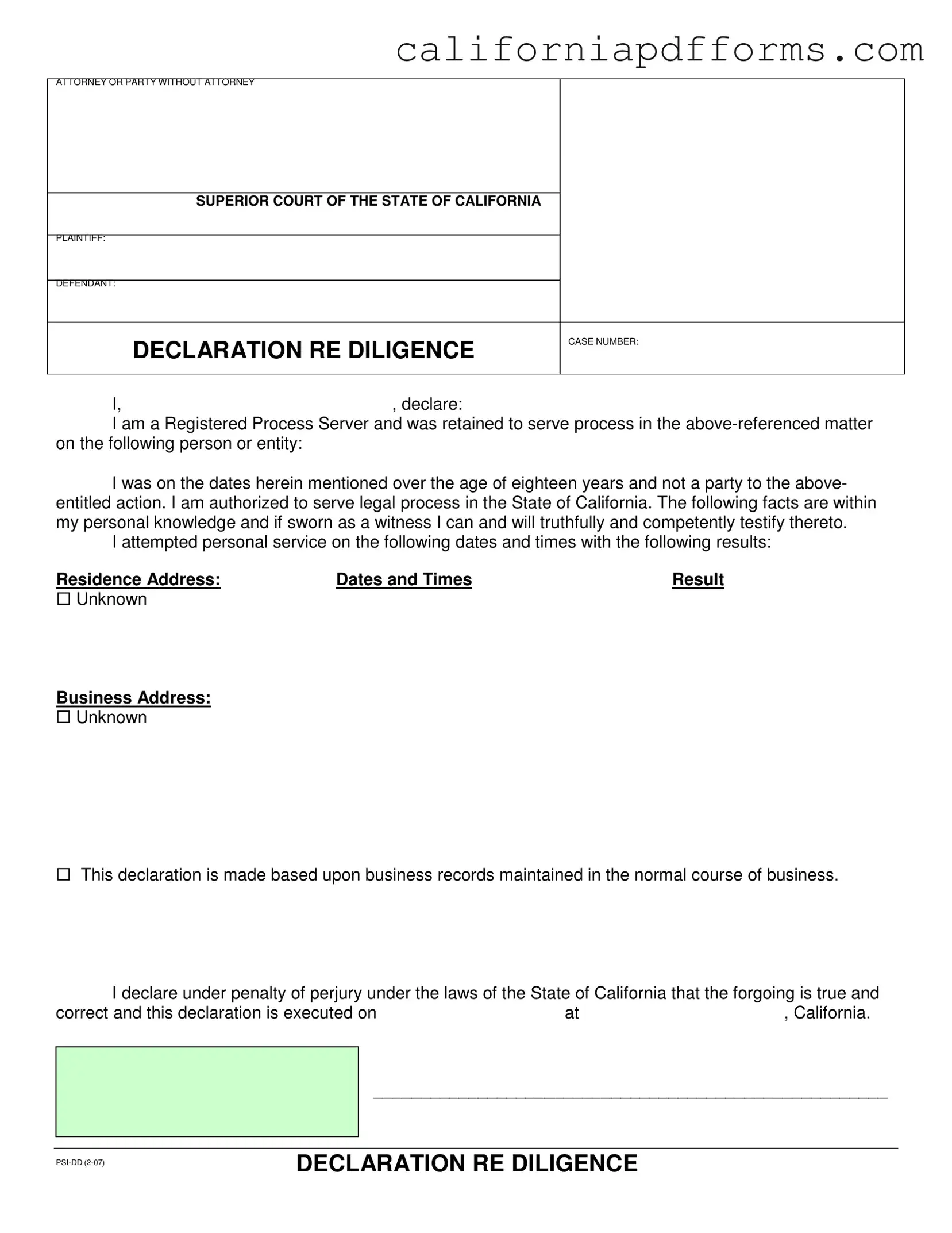The California Diligence form is a legal document used to declare the efforts made to serve legal process to a person or entity involved in a court case. This form is typically filled out by a registered process server who is authorized to deliver legal documents in California.
Only a registered process server or an attorney can complete this form. The individual must be over the age of eighteen and not a party to the legal action. This ensures that the service of process is impartial and follows legal guidelines.
The form requires specific details, including:
-
The names of the plaintiff and defendant
-
The case number
-
The dates and times when service attempts were made
-
The results of those attempts
-
The addresses where the service was attempted
Additionally, the process server must declare that the information is true and correct under penalty of perjury.
What does "diligence" refer to in this context?
Diligence refers to the reasonable efforts made to locate and serve the individual or entity named in the legal documents. The process server must show that they have made multiple attempts and taken appropriate steps to ensure that service is completed.
What happens if the service is unsuccessful?
If the service attempts are unsuccessful, the process server must document these attempts on the Diligence form. This may include noting the times and dates of attempts and any obstacles encountered. The court may allow alternative methods of service if personal service cannot be achieved after reasonable diligence.
Yes, the California Diligence form should be submitted to the court as soon as possible after the service attempts have been made. Timeliness is important, especially if there are deadlines related to the case proceedings.
It is not advisable to modify the California Diligence form. The form must be completed as provided to ensure it meets legal requirements. Any alterations may lead to issues with the acceptance of the document by the court.
The California Diligence form can typically be obtained from the California court's website or through legal document preparation services. It is important to ensure that you are using the most current version of the form to avoid any complications.
